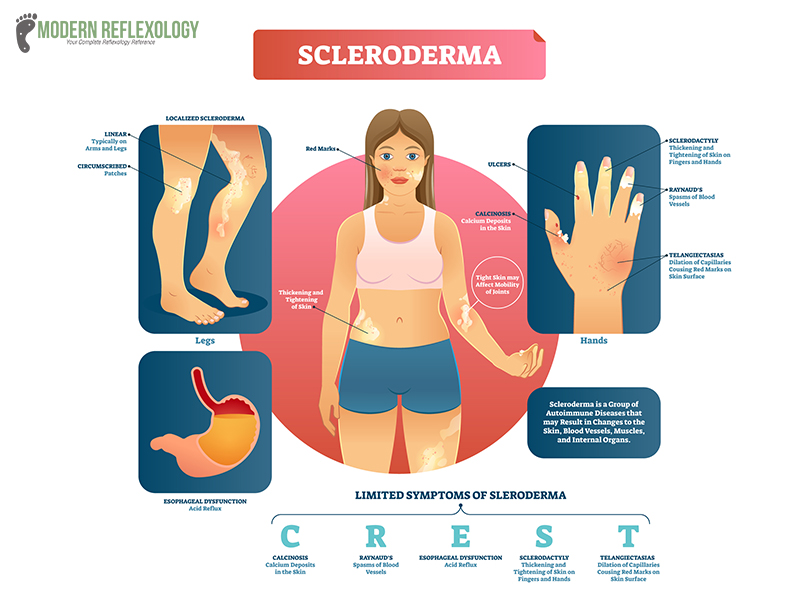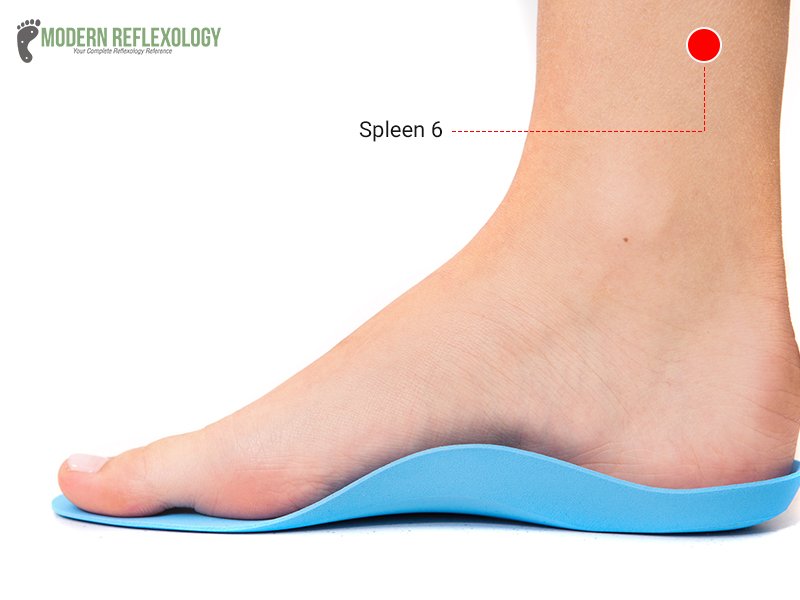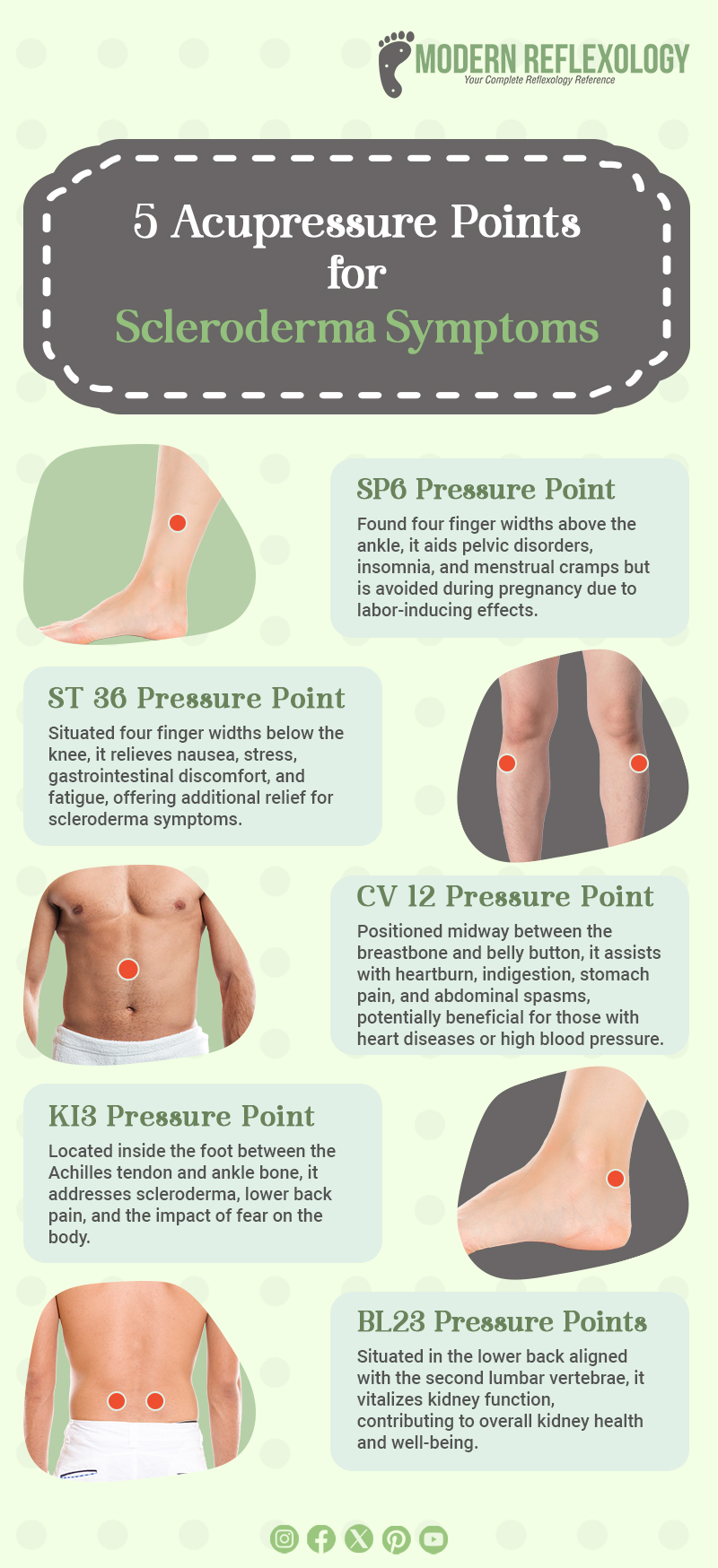What are scleroderma symptoms? But before that, let’s just find a little more about this condition, scleroderma. Scleroderma is an autoimmune disease where antibodies are produced against certain connective tissues. It produces fibrosis and causes a thickening and tightening (sclero = hardening) of the skin (derma). It leads to systemic scleroderma, a hardening process, which can also affect other parts of the body apart from skin; for example, in some cases, the lungs are affected. A limited version of the disease is known as localized or circumscribed scleroderma and it only affects certain areas of the skin.
Scleroderma Crest Symptoms
The scleroderma symptoms affect different parts of your body. They are as follows,
- Thick or hardened skin that looks shiny and smooth; It is most commonly found on the hands and face
- Cold fingers that take on different colors such as red, white, or blue. This is called Raynaud’s phenomenon
- Small red spots appearing on the face and chest; These are opened vessels also known as telangiectasias
- Ulcers or sores appearing on fingertips
- Swollen and painful fingers or toes
- Swollen and painful joints
- Muscle weakness
- Dry mouth and eyes, also known as Sjogren’s syndrome
- Swelling on your hands and fingers, also known as edema
- Shortness of breath
- Weight loss
- Heartburn
- Diarrhea
Scleroderma Causes – According to Chinese Medicine
The American College of Traditional Chinese Medicine published an analysis of autoimmune diseases. There they mentioned that scleroderma is typically linked with qi and yang deficiency. Its coldness can lead to blood stagnation, which is the reason why most disease symptoms are formed. In this situation, most patients suffer from cold limbs (some people also suffer from Raynaud’s syndrome). The other conditions they suffer from are wind-cold disorders; there is also a tendency to suffer from signs of spleen cold, poor digestion, and loose stools.
How can you find out that you suffer from Blood stasis? Well, your tongue reveals the fact, because it turns purple. The principles of therapy involve tonifying the deficiency and resolving stasis of blood. So, how do you treat scleroderma? Is there any natural treatment for the condition? You can stimulate the pressure points in the hands and feet, these points are connected to the nervous system. Reflexologists stimulate these specific glands and organs to treat the condition with massage techniques.
Scleroderma Causes
As we have already mentioned, it is an autoimmune condition. Doctors are of the opinion that one can get affected by scleroderma when one ’s immune system mistakenly attacks the body’s own tissues. This results in inflammation and triggers the body to make more collagen, more than necessary. Excess collagen causes the skin and the internal organs to become hard and tight. Researchers are still trying to find out what causes this autoimmune onslaught. It is said that both genetics and environment play a role in causing this condition.
What are the Risk Factors?
There are some factors that cause scleroderma, some of them are as follows:
- Gender – More women than men get scleroderma, in fact, 3 times more than women.
- Age – Scleroderma affects people between the age group of 20 to 50. It hardly affects children.
- Race and ethnicity – Young women belonging to African ancestry and native Americans belonging to the Choctaw tribe of Oklahoma are more likely to get affected by this disease.
Diagnosis
How do you diagnose scleroderma? You can either consult a rheumatologist or a dermatologist for the same. The doctor will check your skin for thickened and hardened areas. The doctor may also check the tendons and joints and ask you to go for the following tests.
- Blood tests; this you can do by checking the antibodies made by the immune system
- Skin biopsy, to find out more about skin problems
- Chest X-ray or pulmonary function test, to find about the lung damage
- MRI or CT scan, to find out more about muscles and internal organs
- Many early scleroderma symptoms stem from connective-tissue diseases, such as lupus, rheumatoid arthritis, and polymyositis
How to Prevent Scleroderma
How can you prevent scleroderma? Well, the answer to it is still not known, but what your doctor can recommend are tips and tricks to avoid infections, while suffering from this condition.
- Pneumonia or (pneumococcal) vaccine
- Annual flu vaccine
Treatment
There is no cure as such to this condition. There are medications that can treat specific symptoms and also avoid certain complications. Making specific changes in your lifestyle and diet can make this condition a little less trying.
Lifestyle Changes
There are a few ways you can bring about significant changes in your health.
- Eat small but frequent meals so you can reduce heartburn or gas
- Exercise daily to keep your joints flexible and skin supple
- Smoking is a strict no-no as nicotine makes the symptoms of scleroderma worse
- Try and avoid cold and stress, they have a serious impact on circulation
- Use soothing skin creams to reduce some of the symptoms such as pain, swelling, and stiffness
Patients who suffer from Spleen Qi Deficiency, Liver Qi Stagnation, and Liver/Kidney Yin Deficiency suffer from conditions such as blood stagnation, Damp Heat, Internal Wind (spasms), Kidney Qi Deficiency, and Kidney Yang Deficiency.
You can try treating it by strengthening the spleen, move the liver qi, tonify liver and kidney yin; this is what is known as the base pattern. For treating different types of scleroderma, you can try the following acupressure and acupuncture points.
1) SP6 Pressure Point:
San Yin Jiao (SP6) helps treat a number of conditions related to pelvic disorders, urological, insomnia, and menstrual cramps. Find the San Yin Jiao or the (SP6) right inside of your leg, just above your ankle. You can find the highest peak of the ankle then move at least four finger widths up your leg. Apply deep probing pressure slightly behind the bone (tibia) and keep massaging the area for 4-5 seconds. Don’t use this point at the time of pregnancy, as this point can induce labor.
2) ST 36 Pressure Point:
Zu San Li (ST36) besides treating scleroderma can also treat nausea, gastrointestinal discomfort, vomiting, stress, and fatigue. Locate this point four finger widths down right from the bottom of your knee cap, along with the boundary of your shin bone. If you find the point out, a muscle should pop out as you continue to move your foot up and down. First, locate the point and then apply the downward pressure on the muscle, keep stimulating the points for 4-5 seconds.
3) CV 12 Pressure Point:
The CV12 or Conception Vessel 12 is an effective pressure point for treating scleroderma. Find this point on the midline of the body, halfway between the base of the breastbone and the belly button. This is also a great point for treating a number of conditions such as heartburn, constipation, indigestion, stomach pain, and abdominal spasms. This may help alleviate certain conditions in people with heart diseases, high blood pressure or cancer. You will get the best results if you stimulate the point on an empty stomach.
4) KI3 Pressure Point:
The KI3 acupressure point is also known as the Supreme Stream (Kidney 3). Find this point on the inside of the foot, at least halfway between the Achilles-tendon and one side of the ankle-bone. Press this point for scleroderma and also heal lower back pain and the ill-effects of fear on your body.
5) BL23 Pressure Points:
Find the Bladder 23 located on the lower back. The point is in line with the second lumbar or the (low back) vertebrae, on either side of the spine. It’s located about an inch and half away from the spine. This a key point to stimulate the vitalities of the kidneys.
If you want to locate the bladder 23 points, then you must locate the second lumbar vertebrae. How will you locate the second vertebrae, you ask? There are five lumbar vertebrae, each vertebra is numbered 1-5. The fifth vertebrae are the lowest vertebrae that meet the sacrum at the back of the pelvis. Gently massage this point and you will soon be able to tap into the healing benefits of this versatile point.
Try the above-mentioned lifestyle hacks and acupressure points for relief from some of the scleroderma symptoms. Stay committed to the treatment protocol and you will soon get relief. Take care!
Infographic: Acupressure Points for Scleroderma Symptoms
Frequently Asked Questions:
What is the root cause of scleroderma?
The exact cause of scleroderma isn’t fully understood, but it’s believed to originate from an interplay of genetic, environmental, and immune system factors. Research suggests an overactive immune system triggers abnormal collagen production, leading to the characteristic thickening and hardening of connective tissues seen in scleroderma.
How do you treat scleroderma in the fingers?
Treating scleroderma in the fingers involves managing symptoms to maintain flexibility and reduce discomfort. Approaches include medications to alleviate pain and inflammation, physical therapy for hand exercises that preserve mobility, moisturizing to prevent dryness, wearing supports for joint protection, and regular monitoring by healthcare providers.
What are the best exercises for scleroderma?
Opting for exercises that prioritize gentle movements and flexibility maintenance is crucial. Consider stretching exercises to prevent joint stiffness and preserve flexibility. Activities like yoga or Tai Chi offer low-impact workouts, enhancing balance and joint mobility without overexerting the body.
What is a good supplement for scleroderma?
Supplements like Vitamin D, Omega-3 fatty acids, and antioxidants such as Vitamin C and E may support managing specific scleroderma symptoms.
What foods should be avoided with scleroderma?
Some everyday items to avoid include processed foods with additives, excessive amounts of saturated fats, sugary treats, and foods high in salt. Additionally, individuals may want to limit or avoid caffeine and alcohol, as these can exacerbate symptoms in some cases.










Comments are closed